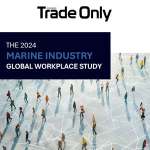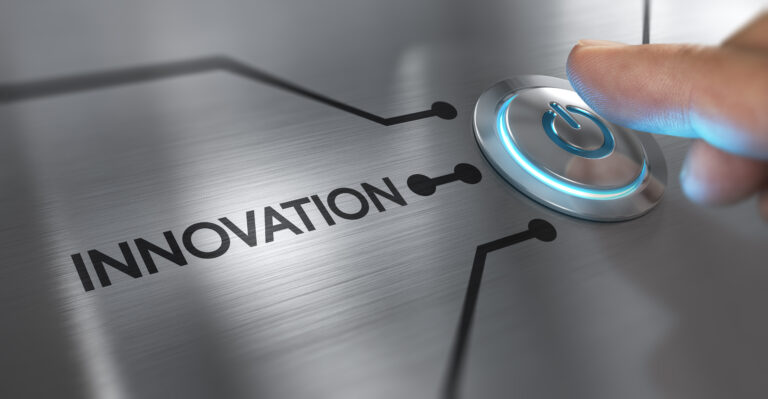The next phase is about to begin in the battle over the National Oceanic and Atmospheric Administration’s attempts to impose new speed limits for boats from 35 to 65 feet on much of the East Coast, in what NOAA says is an effort to help the declining population of North Atlantic right whales. Advocacy leaders in the marine industry say they are working on a number of issues, but they are laser-focused on the NOAA rule, which could be finalized as early as May. Publication of the final rule will be the last step in a rulemaking process that began in August 2022, when NOAA first proposed changes to how boats would be allowed to operate for long periods throughout the year.
Only after the final rule is published will industry stakeholders know what it says, or whether NOAA has made any changes to its proposal based on concerns that industry advocates have raised through public comments, lobbying efforts and more. National Marine Manufacturers Association president Frank Hugelmeyer called the proposed rule an “existential threat” to the marine industry, and testified before Congress that it poses risks to boater safety, along with 314,000 boating and fishing jobs.

But the way the rulemaking process works, the effects of such advocacy efforts are difficult to determine ahead of the final rule being published, says Robyn Boerstling, NMMA senior vice president of government relations. “It’s a very closed process,” she says. “We assume some changes have been made to the rule, but we don’t know what those changes are, and our regulatory posture has not changed. We are opposed to what has been proposed by NOAA.”
Boerstling says the NMMA is now attempting to “make sure every member of Congress and the White House understands that this has serious small-business impact,” with 93% of NMMA members being small businesses.
Mike Sayre, director of government relations for the Marine Retailers Association of the Americas, says his organization is working to make the same point in tandem with the U.S. Small Business Administration’s Office of Advocacy. “What the MRAA is trying to bring to the table is that we represent a bunch of small businesses that will be impacted by the rule,” he says.
On the other side of the argument are environmental groups pushing NOAA to act on behalf of the whales. Few, if any, parties disagree that the species is in trouble, but there is wholesale conflict about whether the rulemaking is justified or likely to have any real effect on that problem. The level of opposition about what should happen is so fierce that once the rule is finalized, Sayre says, NOAA could face legal action from both sides. “This is purely speculation, but I fully expect there to be litigation from the industry,” he says. “If NOAA has modified the rule, it’s entirely possible that both the environmentalists’ group and the industry sue for not going far enough or for going too far. We’ll see.”
Boerstling says the NMMA is also preparing for options on Capitol Hill, such as use of the Congressional Review Act, which allows lawmakers to overturn agency-created rules. Sayre says another option is Congress removing any funding that NOAA could use to implement the rule.

The issues involved are important for policymakers well beyond the East Coast to understand, Boerstling says, because whatever happens with this rule has the potential to affect boaters in a multitude of ways for many years to come. “There are deep, philosophical questions about access to water, and is it the government’s right to tell an individual when you can move your boat and at what speeds?” she says. “We feel strongly that there is a different way. This rule, in particular, does not appropriately contemplate a series of metrics for technology approaches to address whale management strategy, or any marine mammal strategy, for that matter. I think it’s really important that NOAA work to get this right, because we are going to be working on marine mammal strategy issues for a long time because of climate change.”
Pat Healey, president and CEO of the Viking Yacht Co., also says technology can be used to protect marine mammals without restricting boaters. “We’ve made tremendous strides through marine electronics already through the Whale and Vessel Safety Task Force,” Healey says. “NOAA should be leaning on us for input because this is our wheelhouse. The ocean is our livelihood, and no one cares more about it than boat owners and anglers.”
Both the NMMA and MRAA are urging not only marine-industry stakeholders, but also everyday boaters, to sign up for alerts and calls to action at BoatingUnited.org. “That’s where the grassroots call to action will be if the whale rule goes the wrong way,” Sayre says. “Sign up for the updates, and you’ll be made aware when the industry is looking for help.”
Decarbonization
Another advocacy priority this year is decarbonization, Boerstling says. The NMMA is part of the global Propelling Our Future campaign, which is intended to reduce recreational marine carbon emissions in ways that make sense for boats and boating. As part of the campaign, the International Council of Marine Industry Associations released a two-year, 558-page, $1 million research report, Pathways to Propulsion Decarbonization for the Recreational Marine Industry. It looks at propulsion in boats smaller than 79 feet and shows that because of the unique boating environment, and the varied interests of boaters and the experiences they seek, a variety of solutions must be considered to continue reducing carbon emissions from boats.
That research is now being used during advocacy meetings with policymakers on Capitol Hill, Boerstling says. “We have done a great job in articulating that there is not a one-solution approach, and that we’re going to need different technologies to decarbonize,” she says.
A lot of advocacy in this area involves explaining to policymakers that electric propulsion is just one part of the puzzle, she says. There’s also hybrid and hydrogen propulsion, drop-in sustainable fuels, and other ideas to discuss. “We have to educate them that there are various approaches,” she says.
Healey says that for builders like Viking, drop-in sustainable fuels are the most sensible solution. “They will reduce our carbon emissions without modification to the engine or a measurable decrease in performance,” he says. “Now the challenge is to develop a distribution network to make sure these fuels are available at comparable prices.”
Lakes and Wakes
Sayre says another priority the MRAA is working on — in tandem with the NMMA and the Water Sports Industry Association — is legislation and rulemaking about how and where people can use wakeboats responsibly. “There’s some activity in the Midwest, and we had a bill in Oregon, and there’s some activity in Vermont,” he says. “It’s like Whac-A-Mole. One place comes up with an onerous restriction, and then others copy it.”
One recent example is the nonprofit Lakes At Stake Wisconsin, which aims to limit wake-creating boats to lakes larger than 1,500 acres. Another is a rule being drafted by the Lakes and Ponds Program of the Vermont Department of Environmental Conservation that would regulate wake-sports boats on some public waters.
Sayre says that in his discussions with legislators on this issue, he often sees a desire to find compromise. “There’s an industry-supported set of restrictions for things like being about 200 feet offshore,” he says. “If lawmakers are looking at a bunch of angry boaters and angry environmentalists, and if there’s some compromise, they can say they’re doing something.”
Right to Repair
Also on the radar, Sayre says, is legislation known as “right to repair,” which would require original-equipment manufacturers of all kinds of products to make repair instructions and parts available to consumers, sometimes at cost. The idea, Sayre says, is that consumers shouldn’t necessarily have to go to a dealership to get anything fixed. They should also be able to go to an independent shop, or buy the parts and tools for themselves.
“There’s a fair argument to be made that you want competition in the repair and service marketplace, but access to it at a market rate is an issue,” Sayre says, adding that the way boats are built creates additional problems in this policy area. “As technology has advanced, this becomes as much a software problem as a hardware problem. An engine that leaves the factory and is compliant with the Clean Air Act can become non-compliant if a consumer has access to these things.”
For boat dealerships, he says, there’s also concern that language in right-to-repair legislation can impinge on the traditional benefits that dealerships are able to offer customers. “If the independent shop down the road gets the same rate that the dealer does through its relationship with the manufacturer, that becomes pretty difficult to maintain those business relationships,” he says.
The MRAA’s focus is on removing boats from this type of legislation, which often captures them in language about “non-road vehicles and equipment.” “Most often, frankly, when we see these bills, they never intended to include boats,” he says. “They’re trying to apply it to things like tractors or off-road equipment, or they’re talking about consumer electronics. So we work with legislators to target the specific products and not accidentally capture boats.”
Tariff and Tax Policy
Boerstling says the NMMA also continues to work on getting relief for businesses that are struggling with tariffs and trade issues. Many lawmakers, she says, do not understand how many boats are built in the United States. “It’s important for everyone to realize that recreational boating is uniquely American,” she says. “A lot of people think boats are coming from overseas. They’re very surprised that manufacturing is still here in the U.S. When I explain that it’s in Tennessee, Georgia, North Carolina, New Jersey, Maine — people don’t understand the footprint of the marine industry in the U.S. They assume these boats are made elsewhere. That continues to be an important education effort.”
Healey says the government should support American marine manufacturers through R&D tax credits and policies to maintain a strong workforce. “We want the industry to remain uniquely American, and to do so we need a government that creates a business climate that encourages investment in our businesses and promotes consumer growth,” he says.
As with the whale issue, BoatingUnited.org is the place where industry stakeholders can receive alerts and look for opportunities to make their voices heard about tariff, tax and similar issues. Boerstling says more help is especially needed in this area from within the industry ranks.
“We have a very engaged set of CEOs and marine leaders, but we would like to introduce the next generation of leaders to advocacy,” Boerstling says. “It’s hard for people to step aside from a busy day when they’re trying to keep a business afloat, but it makes an impact.”
This article was originally published in the May 2024 issue.













